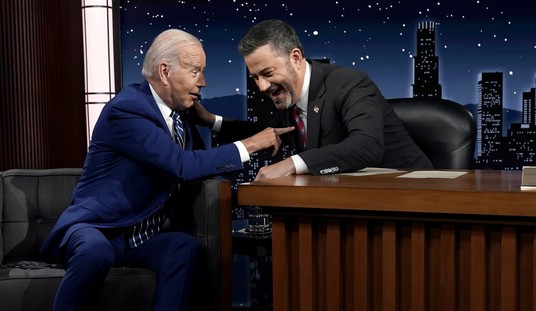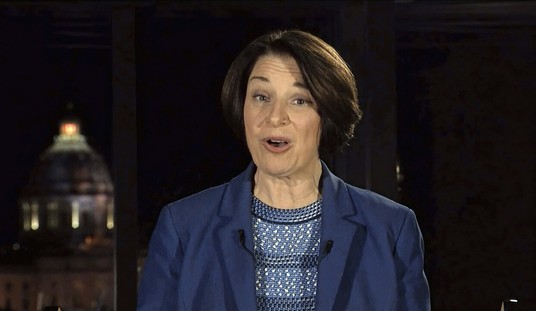This is a moral victory of sorts. The judge considered three defenses offered by the Times for its garbage editorial in June implying Palin’s “crosshairs” map inspired Jared Loughner to shoot Gabby Giffords and several others. He rejected two and a half of them. More importantly, he affirmed a fact that everyone who follows conservative media has long known to be true but which somehow escaped the attention of the editorial editor at the country’s most famous newspaper: Palin had nothing to do with the Giffords shooting. She was smeared endlessly in the aftermath of it by liberals who wanted to score cheap points against tea-party populists for their anti-government rhetoric and the smear persisted long enough in some left-wing imaginations to have inspired a false New York Times editorial six farking years later. She’s been vindicated here insofar as a federal judge has cleared her of moral culpability in the Tucson massacre.
But winning a defamation suit is almost insuperably difficult under the First Amendment for a public figure. I thought Palin had a real chance because the bias here seemed so clear — the “crosshairs” thing was debunked years ago; the Times loathes Palin and her politics and has made that clear in editorials past; and it invoked her and the Tucson smear gratuitously in an editorial about an unrelated incident, the near-massacre of Republicans by deranged leftist James Hodgkinson. To prove defamation a public figure needs to show that the author published a falsehood with “actual malice,” i.e. that he either knew his statement was wrong or that he showed reckless disregard for its truth or falsity. Even if she couldn’t show that the editorial board knew the “crosshairs” connection to Tucson was a smear, surely they were guilty of recklessness in publishing such a vicious charge when even a few minutes of research would have debunked it.
Nope, said Judge Jed Rakoff. The Times may well have been negligent, but negligence ain’t enough to win a defamation suit if you’re a public figure. To show reckless disregard for the truth, a plaintiff needs to do more than just say “they could have and should have checked their facts.” And they need to do more than say that “the Times” or “the editorial board” had reason to know that the “crosshairs” connection was a smear. Palin had to show that the actual editorial writer, editor James Bennet, was personally reckless with the truth. There’s no such thing as “institutional” culpability for the defamation, Rakoff claims, even if other writers at the Times or on the editorial board knew that Bennet’s editorial was wildly wrong:

Another point in Bennet’s favor: He corrected the editorial after the smear was brought to his attention. According to Rakoff that’s strong evidence of negligence, not the more severe standard of recklessness that the First Amendment requires, although I don’t quite understand that logic. Surely extreme negligence qualifies as recklessness. If the Times accused someone of being a pedophile based on a bare accusation by an unreliable source and then quickly corrected it, the correction wouldn’t absolve them of gross irresponsibility in publishing the smear in the first place. Bennet’s accusation against Palin strikes me as grossly irresponsible given the severity of the consequences — murder committed by Loughner — and the fact that she’s widely known at this point to have had nothing to do with Loughner’s motives:

Bennet could have easily spotted his error if he had taken a minute to check. But that’s also no big deal, per Rakoff. Failing to do your homework is negligence, not recklessness, even when the homework is really easy and would be the minimally decent thing to do as a human being before leveling a charge this serious in a platform as prominent as the Times:

And what of Bennet himself? There’s just not enough in the record, says Rakoff, to support the idea that he was so personally biased against Palin that he added the “crosshairs” material maliciously. Sure, the editorial board dislikes her. And sure, Bennet happens to be the brother of a Democratic senator from Colorado. If you want to show malice, though, you need particularized facts. “The Times and its employees are all liberal tools” may be true but a public figure needs to do better than that. Political bias is not enough to prove malice:

So Palin loses, sort of. Rakoff agreed with her that the editorial was “of and concerning” her, even though the Times weaselly argued that it was technically about her Super PAC, which published the “crosshairs” map. He also agreed with her that the Times made assertions of fact in the editorial, not mere opinion, as the Times lamely claimed. He even agreed with her, more or less, that the Times was negligent in the “crosshairs” map claim, which would have been enough to defeat a motion to dismiss were she a private figure. But she isn’t. She’s very, very public. So, as almost always happens to public figures, she’s stuck.
I understand Rakoff’s point that this is negligence, not recklessness, because it suggests sloppiness with the facts more so than conscious maliciousness. But I think that gets to why the editorial galled me and so many other righties: Those two things aren’t as clearly distinct as Rakoff implies. It may be that Bennet didn’t set out to smear Palin in the editorial, but he or any other Times writer would have been far more careful with a charge that serious if they were writing about someone whose politics they admire. The error here was, I think, a product of the political malice the paper feels for Palin; Bennet likely didn’t check his facts because, I suspect, ultimately he didn’t care enough about Palin’s reputation to worry about whether he was writing was true or false. Bias begets malice, which begets indifference towards the truth about the subject. That seems close enough to me to “reckless disregard for truth or falsity” to merit a jury trial. But since it’s very hard to prove, the Times gets away with it.
Although maybe not for long? Lawyer Ted Frank sees an appeal in the offing here:
Fact that Rakoff felt need to hold an evidentiary hearing shows complaint survives 12(b)(6). If Palin filed 56(d) papers, she wins appeal. https://t.co/mGka39NV7C
— tedfrank 😷 (@tedfrank) August 29, 2017
Frank’s point is that typically when a judge grants a motion to dismiss, as Rakoff did here for the Times, it’s because he believes the facts alleged by the plaintiff even if true wouldn’t support a guilty verdict if the case went before the jury. But Rakoff held an evidentiary hearing: He wanted to hear from some Times personnel on what they knew about the “crosshairs” map and Palin’s culpability, or rather non-culpability, in Loughner’s rampage. If Rakoff himself thought Palin’s case was sufficiently strong as to warrant some consideration of further evidence, why isn’t it sufficiently strong to survive a motion to dismiss and proceed to trial? Let the jury decide.







Join the conversation as a VIP Member